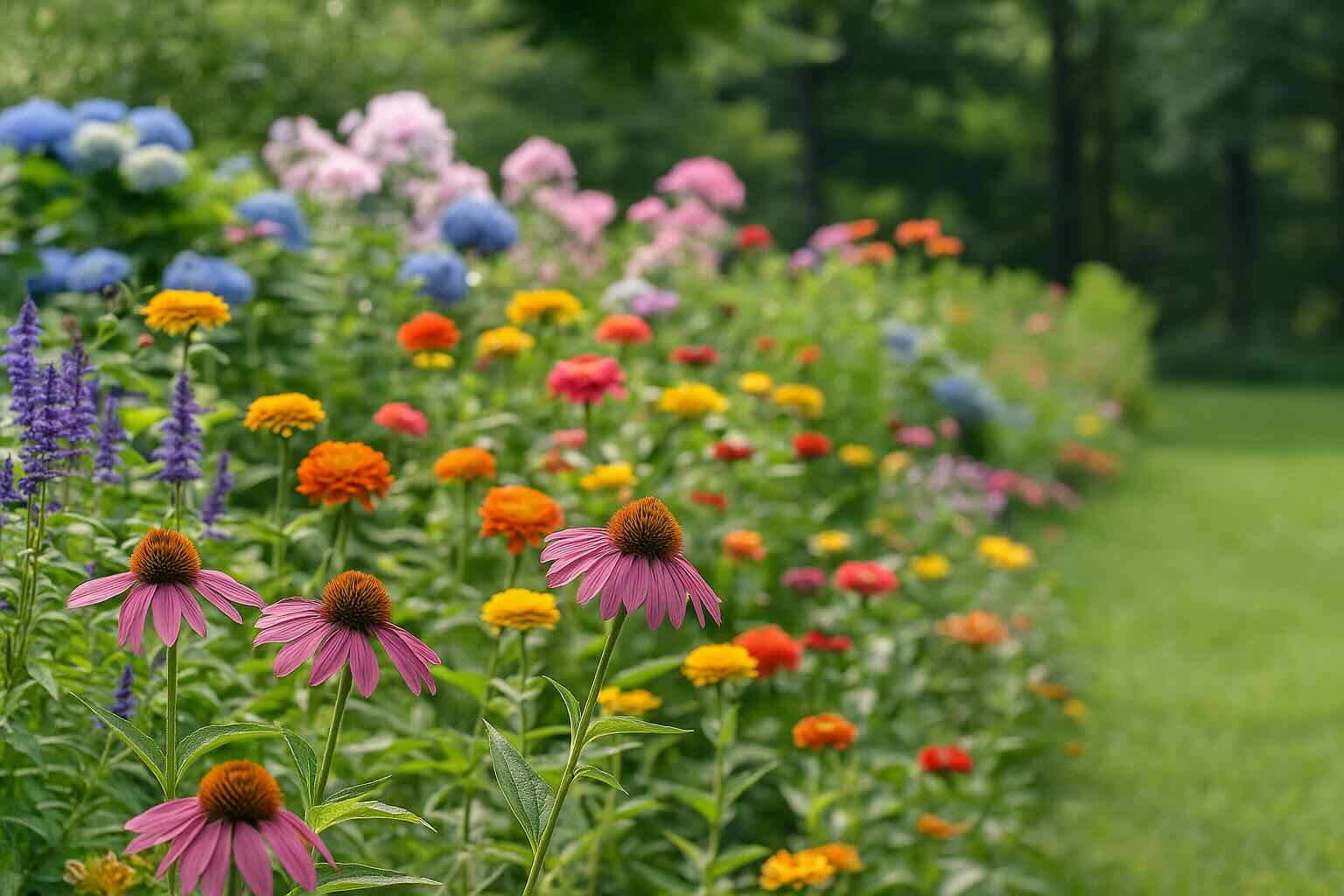A blooming garden is more than a feast for the eyes—it’s a source of joy, balance, and connection with nature. Yet, many gardeners wonder why some gardens explode with color while others fade too soon. The secret lies in timing, soil, plant choice, and even the moon’s cycle. With the right approach, you can transform your outdoor space into a year-round paradise.
Understanding the Bloom Cycle
Every plant has its rhythm. Some flowers are early risers, showing their colors in spring, while others wait until summer or fall. To keep your garden alive with blossoms from March through October, mix early, mid, and late-season bloomers. Tulips and daffodils, for instance, welcome spring, while roses and dahlias peak in summer. Chrysanthemums and asters then extend the show into autumn.
This layered approach ensures there’s always something in bloom. It’s like curating a living orchestra, where each plant plays its part at the right time. Gardeners who embrace this rhythm rarely face the disappointment of a dull season.
The Role of Soil and Nutrition
Healthy soil is the true foundation of a blooming garden. Flowers need more than just sunlight—they crave nutrients. Compost, organic fertilizers, and mulched leaves all enrich the soil, providing steady nourishment. Adding bone meal or seaweed extract can boost root strength and enhance flower production.
Equally important is drainage. Roots suffocate in waterlogged soil, and stressed plants rarely bloom. To keep the balance, loosen heavy soils with sand or perlite, and ensure pots have drainage holes. Strong, well-fed roots produce vibrant, lasting blossoms.
Moon Gardening and Blooming Patterns
For centuries, gardeners have planted according to the lunar cycle. The waxing moon, when light grows each night, is believed to favor plants that bloom above ground. Many gardeners sow flower seeds during this period, claiming stronger growth and richer blossoms. The waning moon, by contrast, is ideal for pruning and focusing energy on roots.
Though science is still exploring these practices, many home gardeners swear by lunar planting calendars. Even if partly symbolic, aligning your planting and care routines with the moon can add rhythm and mindfulness to your gardening journey.
Watering: The Fine Balance
Water is life, but too much or too little can disrupt blooming. Morning watering is best—it fuels photosynthesis and allows leaves to dry before nightfall, preventing fungal issues. Deep watering once or twice a week encourages roots to grow downward, making plants more resilient.
Consider grouping flowers with similar water needs together. For example, lavender and rosemary thrive in drier conditions, while hydrangeas and impatiens prefer consistently moist soil. Tailoring your watering approach keeps every plant blooming at its peak.
Sunlight and Placement
Most flowering plants crave at least six hours of sunlight daily. However, not all blooms want full sun. Shade-loving varieties like begonias, foxgloves, and fuchsias prefer filtered light. The key is matching plants to their natural habitats. A sunflower in the shade will sulk, while a fern in the heat will burn.
Observe your garden carefully. Notice where the morning sun falls, where shade lingers, and where hot afternoon rays dominate. Planting with awareness ensures each flower receives the light it needs to thrive.
Pruning and Deadheading for More Blooms
One of the simplest tricks for extending the bloom season is deadheading—removing spent flowers before they go to seed. This signals the plant to keep producing new buds. Roses, zinnias, and marigolds, in particular, reward regular deadheading with waves of fresh blossoms.
Pruning also shapes growth. Cutting back leggy stems encourages bushier, fuller plants. Just be mindful of timing: prune spring-blooming shrubs like lilacs right after they flower, while summer bloomers can be trimmed in late winter or early spring.
Seasonal Care and Protection
A blooming garden doesn’t happen by accident—it’s the result of consistent care. Mulching keeps soil cool and moist in summer while protecting roots during winter. Staking tall flowers prevents wind damage, and covering tender plants shields them from unexpected frosts.
Rotate plant positions each year to avoid soil depletion and reduce pests. Companion planting—such as pairing marigolds with tomatoes—also helps deter insects naturally, creating healthier conditions for flowers to flourish.
The Emotional Power of Blooms
Beyond their beauty, blooms nourish the mind. Studies show that flowers reduce stress, spark joy, and improve concentration. A blooming garden becomes not only a physical sanctuary but also a psychological retreat. Morning walks among blossoms can set the tone for the day, while evening moments in a flower-filled yard bring calm after hours of activity.
When we nurture plants to bloom, we also nurture ourselves. The rhythm of planting, watering, and watching blossoms unfold mirrors cycles in our own lives—reminding us that growth and renewal are always possible.
Conclusion: A Garden That Never Sleeps
A blooming garden is a living story, unfolding with each season. By choosing plants wisely, caring for soil, aligning with natural rhythms, and tending with patience, you can ensure a constant parade of blossoms. From the first tulip of spring to the last chrysanthemum of fall, your garden can remain alive with color, fragrance, and inspiration.
Whether you’re a beginner or a seasoned gardener, remember this: every bloom tells you that your care, attention, and timing made beauty possible. And with the right approach, that beauty can last all year long.
